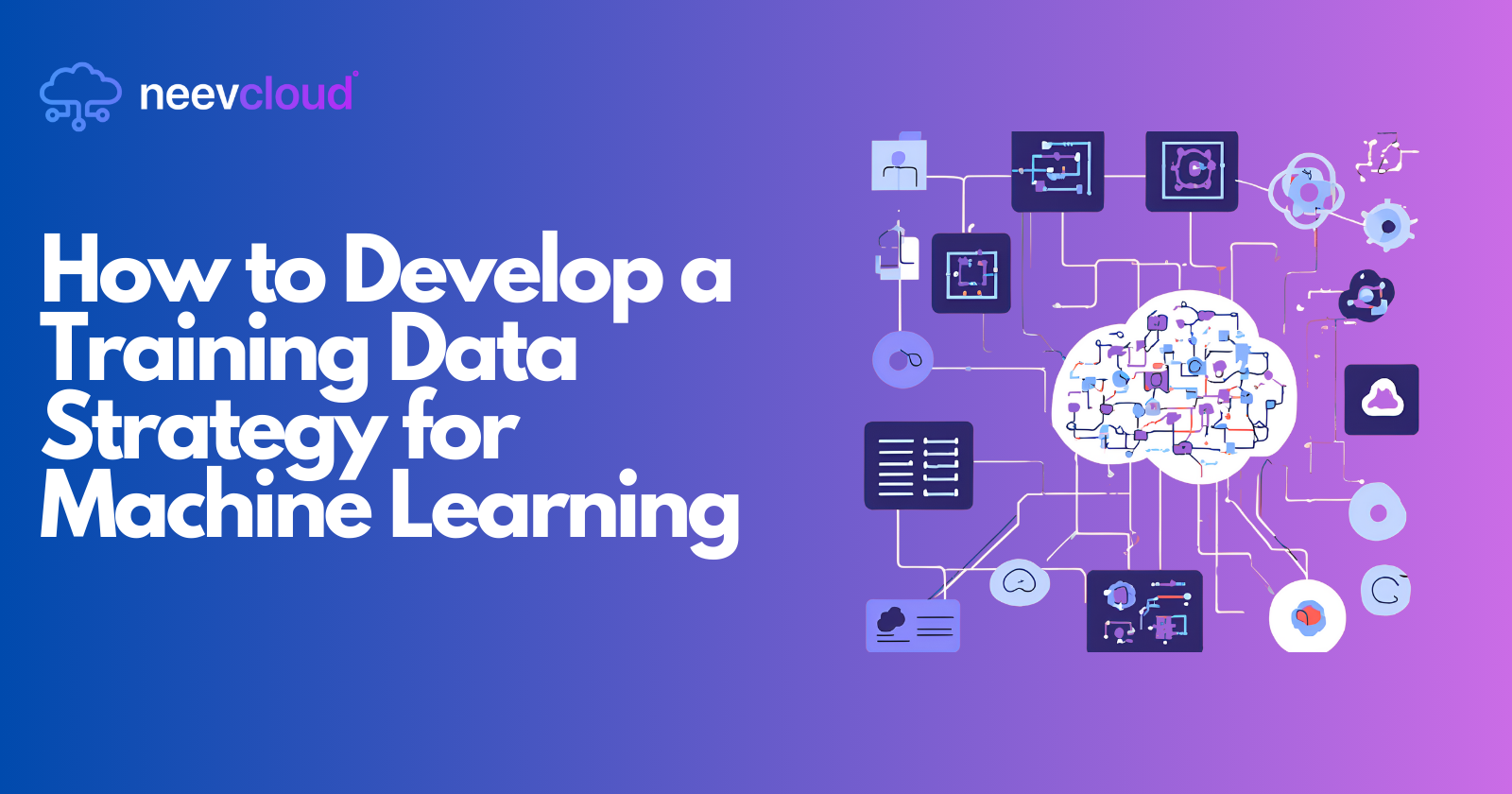How to Develop a Training Data Strategy for Machine Learning
 Tanvi Ausare
Tanvi Ausare
In the era of artificial intelligence (AI) and machine learning (ML), the success of your models hinges significantly on the quality and structure of your training data. As organizations move towards cloud-based solutions, particularly leveraging AI Cloud and Cloud GPU, formulating a robust training data strategy becomes essential. This blog post will delve into the steps necessary to develop an effective training data strategy for machine learning, ensuring your models are trained on the best possible data.
Why a Training Data Strategy is Crucial
Before we dive into the specifics, it's important to understand why a training data strategy is critical:
Quality of Output: The quality of the training data directly influences the model’s performance. Poor quality data can lead to biased or inaccurate results.
Efficiency: A well-defined strategy can streamline the data collection and preprocessing process, saving time and resources.
Scalability: As your AI ML initiatives grow, a scalable training data strategy ensures that your data handling processes can keep pace.
Compliance and Security: With increasing regulations around data privacy and protection, having a clear strategy helps in maintaining compliance.
Steps to Develop a Training Data Strategy
1. Define Objectives
The first step in developing a training data strategy is to clearly define your objectives. Understanding what you want to achieve with your machine learning model will guide your data collection and processing efforts.
Business Goals: Identify the specific business problems you are trying to solve.
Model Requirements: Determine the types of models that will be built and their requirements in terms of data.
2. Understand Your Data Needs
Once your objectives are clear, it's essential to identify the types of data needed to achieve those goals. This includes:
Data Types: Decide on the data types required (text, images, audio, etc.).
Volume: Estimate the volume of data necessary for training the model effectively.
Quality: Establish quality standards for your data, including accuracy and relevancy.
3. Data Sourcing
With your data needs defined, the next step is to source the data. Depending on your objectives, data can be sourced from various channels:
Internal Sources: Utilize existing company data from databases, CRM systems, and other internal repositories.
External Sources: Explore public datasets, APIs, and third-party data providers.
Synthetic Data: Consider generating synthetic data using techniques like data augmentation, especially when dealing with limited datasets.
4. Data Annotation and Labeling
For supervised learning, data annotation and labeling are crucial. This process can be time-consuming but is essential for training effective models. Here are some best practices:
In-House vs. Outsourcing: Decide whether to handle labeling internally or outsource it to professional annotators.
Annotation Tools: Use specialized tools to improve the efficiency and accuracy of the labeling process.
Quality Control: Implement a system for quality control to ensure that labeled data meets the required standards.
5. Data Preprocessing
Once data is collected and labeled, preprocessing is the next step. This involves cleaning and transforming data to make it suitable for machine learning algorithms. Key preprocessing tasks include:
Handling Missing Values: Decide on strategies for dealing with missing data, such as imputation or removal.
Normalization: Normalize data to ensure consistency across different features.
Feature Engineering: Create new features or modify existing ones to improve model performance.
6. Leveraging AI Cloud and Cloud GPU
Using AI Cloud and Cloud GPU resources can significantly enhance your training data strategy. Here's how:
Scalability: AI Cloud platforms provide the ability to scale resources according to your data needs, making it easier to manage large datasets.
Processing Power: Cloud GPUs offer the computational power necessary for intensive data preprocessing and model training tasks.
Collaboration: Cloud environments enable collaboration among teams, allowing multiple users to access and contribute to the data strategy.
7. Data Governance and Compliance
In an age of increasing regulations around data privacy, implementing a data governance framework is essential. This includes:
Data Privacy: Ensure compliance with data protection regulations such as GDPR and CCPA.
Access Controls: Implement role-based access controls to safeguard sensitive data.
Data Auditing: Regularly audit your data management practices to ensure compliance and quality.
8. Continuous Monitoring and Improvement
The development of a training data strategy is not a one-time effort. Continuous monitoring and improvement are necessary to adapt to changing requirements and enhance model performance:
Feedback Loops: Establish feedback loops to assess model performance and identify data quality issues.
Data Refreshing: Regularly update your training datasets to include new data and reflect changes in the underlying domain.
Performance Metrics: Use metrics to evaluate the effectiveness of your data strategy and make adjustments as needed.
Best Practices for a Successful Training Data Strategy
In addition to the outlined steps, here are some best practices to consider when developing your training data strategy:
Prioritize Data Quality: Always prioritize the quality of data over quantity. High-quality data will yield better model performance.
Embrace Automation: Use automation tools for data collection, preprocessing, and labeling to enhance efficiency.
Engage Stakeholders: Involve stakeholders from different departments to gather diverse perspectives on data needs and objectives.
Document Processes: Maintain thorough documentation of your data strategy and processes to ensure consistency and facilitate knowledge sharing.
Conclusion
Developing a training data strategy for machine learning is a critical step in ensuring the success of your AI ML initiatives. By following the outlined steps and best practices, organizations can leverage the power of AI Cloud and Cloud GPU to enhance their data strategies, ultimately leading to more accurate and effective machine learning models.
As the landscape of machine learning continues to evolve, staying proactive in refining your training data strategy will ensure your organization remains at the forefront of innovation in AI.
This comprehensive guide should help you in crafting a robust training data strategy, utilizing AI Cloud and Cloud GPU technologies effectively. By prioritizing quality data and continuous improvement, your machine learning models can achieve their fullest potential, driving business success and innovation.
Subscribe to my newsletter
Read articles from Tanvi Ausare directly inside your inbox. Subscribe to the newsletter, and don't miss out.
Written by
